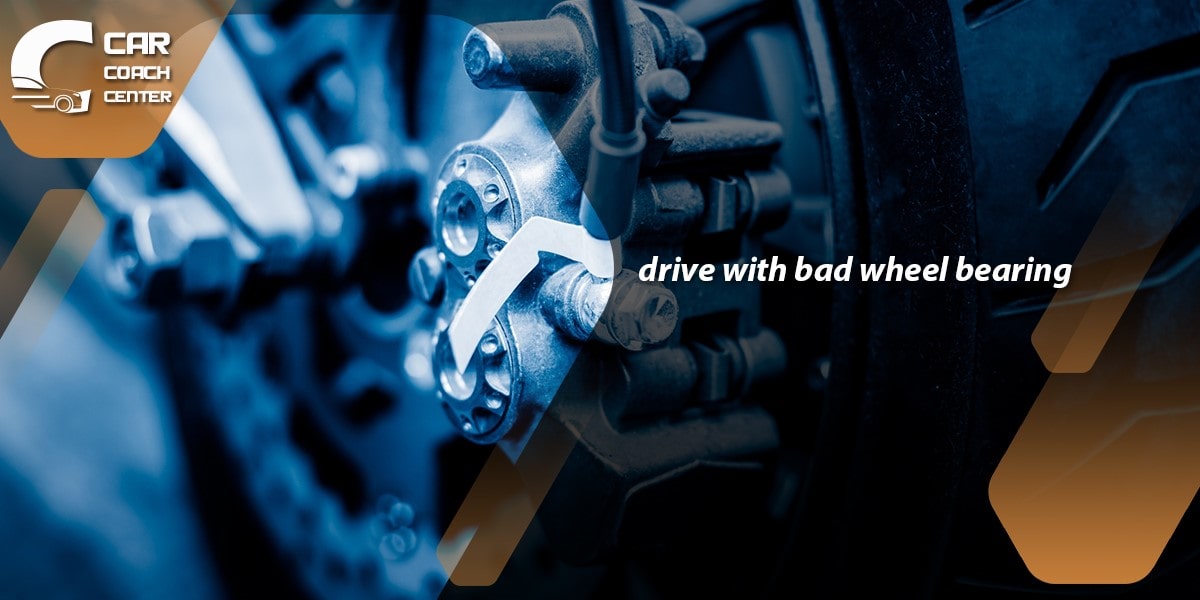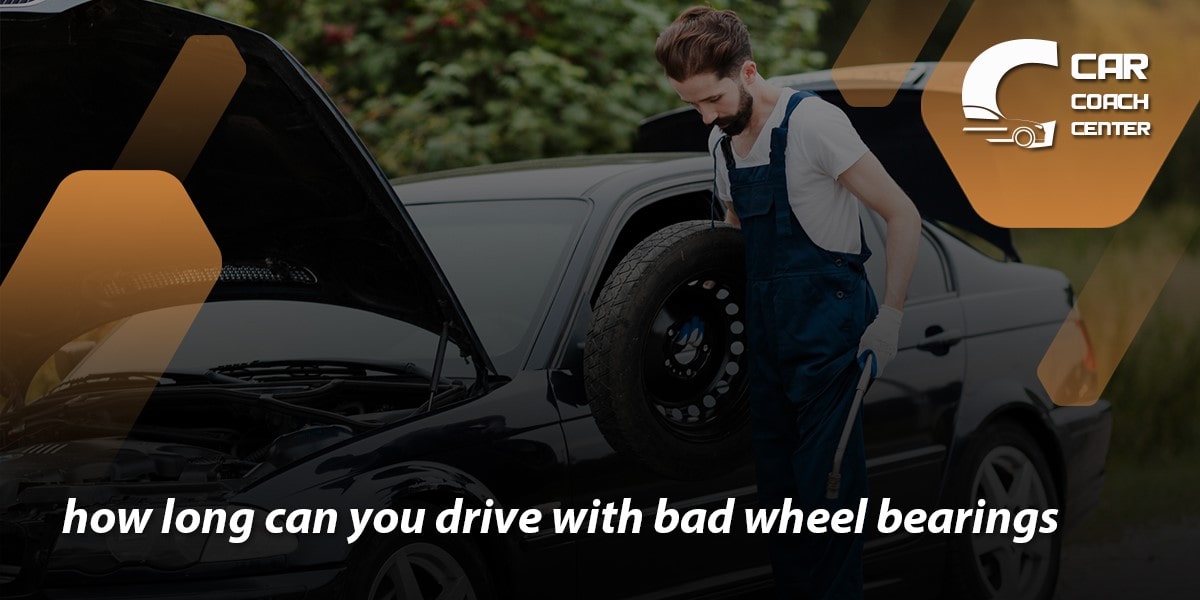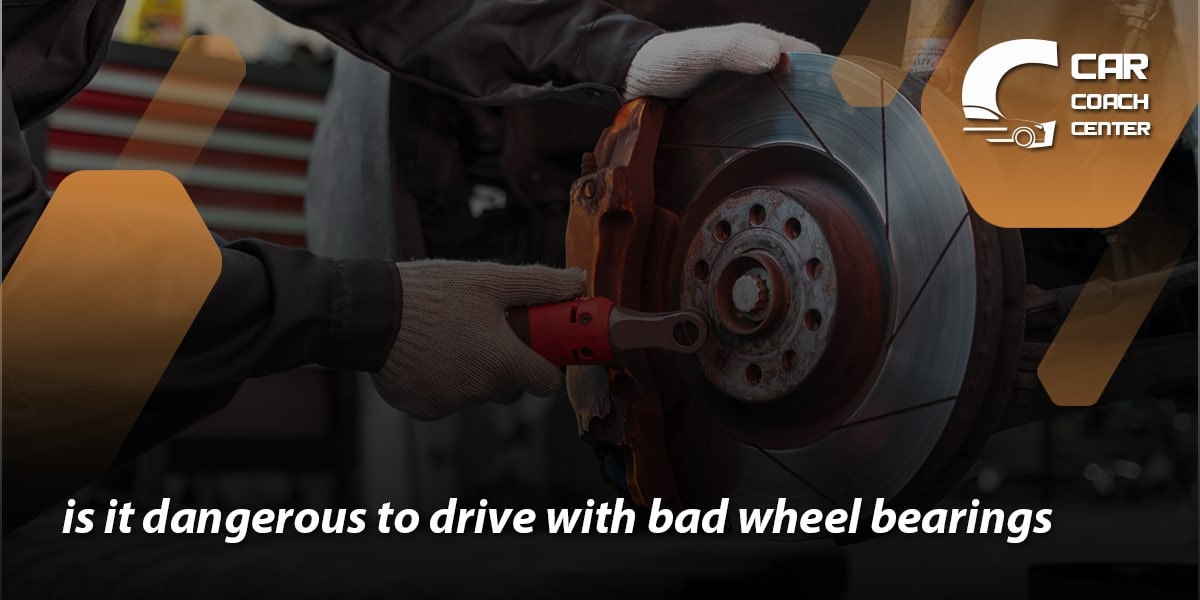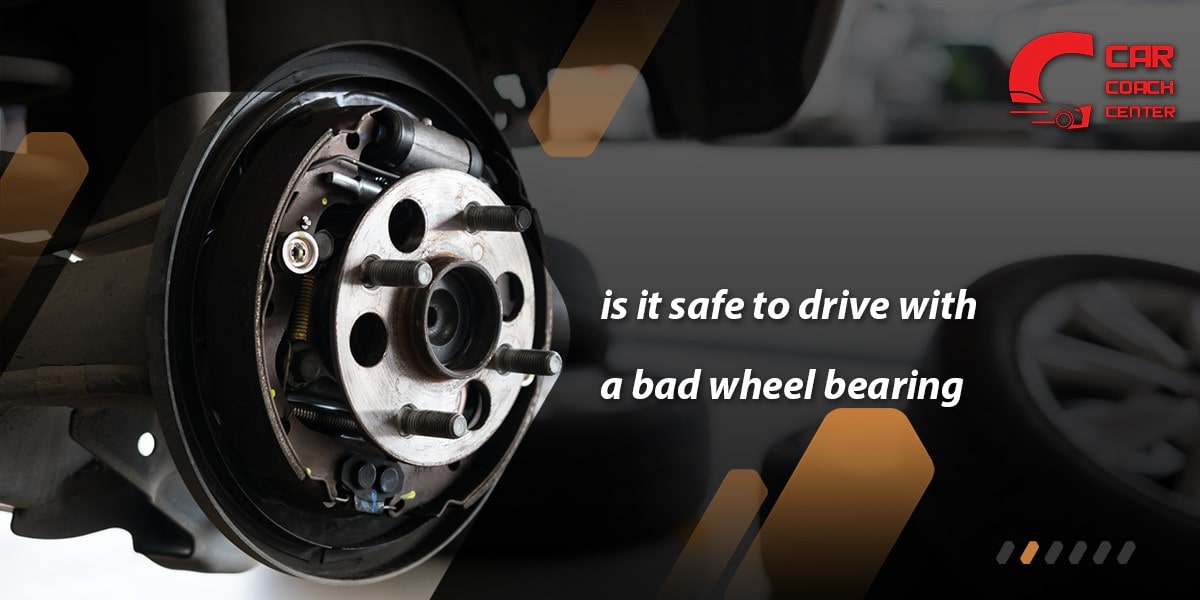Can You Drive A Car With A Bad Wheel Bearing
Your car’s wheel bearings are critical in ensuring a smooth and safe driving experience. However, like any other component, they are subject to wear and tear over time. If you suspect your wheel bearings might be compromised, you may wonder, “Can you drive a car with a bad wheel bearing?” This article will explore the implications of driving with a faulty wheel bearing and delve into the potential risks involved.
We’ll also discuss the telltale signs that indicate a bad wheel bearing and the safety hazards associated with neglecting the issue. Furthermore, we’ll examine whether there are any temporary fixes to get you through a short journey and whether repairing or replacing the faulty wheel bearing is wiser. Lastly, we’ll provide practical tips on preventive maintenance to help extend the life of your wheel bearings.

By the end of this article, you’ll have a clearer understanding of the impact a bad wheel bearing can have on your vehicle’s performance and safety, empowering you to make informed decisions about its maintenance and repair.
The Telltale Signs: Recognizing a Bad Wheel Bearing
Your car’s wheel bearings allow smooth rotation between the wheel hub and the axle. When these bearings wear out or become damaged, they can produce distinct warning signs that indicate a problem. Recognizing these telltale signs early on can help you address the issue before it worsens and potentially causes more extensive damage. Here are a few signs that may indicate a bad wheel bearing:
Strange Noises
One of the most common indicators of a failing wheel bearing is unusual noises from the affected wheel. These noises can vary from a low-pitched humming or rumbling sound to a high-pitched squeal. Pay attention to any more prominent noise as you increase your speed or make turns. Remember, these sounds may resemble other car problems, so it’s important to consult a professional for an accurate diagnosis.
Steering Responsiveness
A bad wheel bearing can affect your car’s handling and steering responsiveness. You may notice that your steering feels loose or less stable than usual. The vehicle might also pull to one side, especially at higher speeds. If you experience any changes in your steering behavior, it’s crucial to have your wheel bearings inspected promptly.
Uneven Tire Wear
Wheel bearings are vital in maintaining proper alignment and weight distribution across your tires. When a wheel bearing fails, it can cause uneven tire wear patterns. Inspect your tires regularly and look for signs such as excessive wear on one side or uneven tread depth. If you notice uneven tire wear, checking your wheel bearings is important, as ignoring the issue can lead to further complications.
Safety Implications: Understanding the Risks
Driving with a bad wheel bearing poses significant risks that can compromise your safety on the road. It’s crucial to understand these implications to make informed decisions regarding the maintenance and repair of your vehicle. Here are some key safety risks associated with driving with a faulty wheel bearing:
Increased Braking Distance
A bad wheel bearing can affect your car’s braking performance. As the bearing deteriorates, it can create excess friction and resistance, increasing braking distance. This extended stopping distance can be particularly dangerous in emergencies where every inch counts. With proper wheel-bearing functionality, your ability to brake effectively and swiftly can be protected, putting you and others at risk.

Loss of Control
Wheel bearings are integral to maintaining stable handling and control of your vehicle. A faulty bearing can cause vibrations, wobbling, or a pulling sensation, making it challenging to steer your car accurately. This loss of control increases the likelihood of accidents, especially during sudden maneuvers or when navigating curves and corners. Ignoring a bad wheel bearing can lead to unpredictable handling, potentially resulting in losing control of your vehicle.
The Domino Effect
Neglecting a bad wheel bearing can affect other vehicle components. As the bearing deteriorates further, it can cause excessive strain on surrounding parts, such as the suspension system, axle, and tires. This additional stress can lead to accelerated wear and potential failures, further compromising the safety and performance of your vehicle.
To ensure your safety and the safety of others on the road, promptly addressing any issues with your wheel bearings is essential. If you suspect a problem, consult a qualified mechanic to inspect thoroughly and recommend the appropriate repairs or replacements.
By prioritizing the maintenance and repair of your wheel bearings, you can mitigate the risks associated with driving with a bad wheel bearing and maintain optimal safety while on the road. Remember, proactive action can prevent potentially dangerous situations and contribute to a safer driving experience.
DIY Diagnosis: Can You Spot the Problem?
While it’s always recommended to have a professional mechanic inspect and diagnose issues with your vehicle, there are some basic DIY methods to help identify a potential problem with your wheel bearings. These simple tests can provide initial clues and help determine if further action is needed. Here are a few steps to assist you in diagnosing a bad wheel bearing at home:
Listen to Your Car
One of the primary indicators of a faulty wheel bearing is unusual sounds. Start by driving your car at a moderate speed in a quiet environment, such as an empty parking lot or a residential street. Pay close attention to any abnormal noises coming from the wheels. A bad wheel bearing often produces a distinct humming, grinding, or growling sound, which may increase or change when you turn or apply brakes. If you notice any unusual sounds that persist, it’s advisable to have your wheel bearings inspected by a professional.
Check for Wheel Play
Another DIY method to check for potential wheel bearing issues is to test for wheel play. Safely jack up the corner of the car where you suspect a problem exists, ensuring the vehicle is secure on jack stands. Grasp the tire firmly at the 12 and 6 o’clock positions, and try to rock it back and forth. If you feel excessive movement or play, it could indicate a worn-out or damaged wheel bearing.
Look Out for Vibrations
A failing wheel bearing can sometimes cause vibrations, especially at higher speeds. If you experience noticeable vibrations in the steering wheel or the car’s body, it’s worth investigating further. While other factors like tire balance or alignment issues can also cause vibrations, it’s important to rule out a potential wheel-bearing problem.

Temporary Fixes: Can You Drive a Little Longer?
Discovering a bad wheel bearing in your car can be concerning, especially if immediate repairs are not feasible. While it’s always recommended to address the issue promptly, there may be situations where you need to drive a short distance before scheduling repairs. In such cases, here are a few temporary fixes that can help you drive a little longer:
Reduce Speed and Distance
If you must drive with a bad wheel bearing, it’s essential to reduce your speed and limit your driving distance as much as possible. Driving at lower speeds minimizes stress on the bearing and reduces the risk of further damage. Limit your journeys to essential trips and avoid unnecessary long drives until the issue is resolved.
Distribute the Load
Uneven weight distribution can exacerbate a faulty wheel bearing strain. To alleviate this, try redistributing the load in your vehicle. If feasible, shift heavier items toward the car’s center or distribute them evenly across the front and rear compartments. This helps reduce the load on the affected wheel and can provide temporary relief.
Avoid Excessive Turns
Turning puts additional stress on wheel bearings. While driving with a bad wheel bearing, try to minimize sharp turns or sudden maneuvers. Make wider turns instead and approach corners at a slower, controlled pace. This reduces the strain on the bearing and lowers the risk of unexpected failures while turning.
Consult a Professional
While these temporary fixes can help in urgent situations, it’s crucial to remember that they are not permanent solutions. Driving with a bad wheel bearing should be a temporary measure until you can have the issue resolved by a qualified mechanic. Consult a professional as soon as possible to diagnose the problem accurately and schedule the necessary repairs or replacements.
The Cost of Neglect: Repair or Replace?
When confronted with a bad wheel bearing, you may wonder whether repairing or replacing the faulty component is more cost-effective. While the decision ultimately depends on the specific circumstances, several factors can help guide your choice. Consider the following aspects when evaluating the cost of neglecting a bad wheel bearing:
Extent of Damage
The severity of the damage to the wheel bearing plays a significant role in determining whether it can be repaired or needs to be replaced. If the issue is identified early, a simple repair may be sufficient, such as repacking the bearing with fresh grease or replacing the bearing race. However, if the damage is extensive, replacement of the entire wheel bearing assembly may be necessary.
Additional Damage Potential
Neglecting a bad wheel bearing can have a cascading effect on other components of your vehicle. The increased strain and vibration caused by a faulty bearing can lead to premature wear and damage to parts such as the axle, suspension system, or even the tires. Consider the potential long-term costs of additional repairs that may arise from neglecting a bad wheel bearing.
Labor and Parts Costs
When weighing the cost of repair versus replacement, consider the labor and parts costs involved. Repairing a wheel bearing typically involves disassembling the wheel hub, inspecting and cleaning the components, and reassembling them with new grease or replacement parts. On the other hand, replacing the entire wheel bearing assembly may require less labor but involve higher parts costs. Obtain quotes from reputable mechanics to compare the expenses associated with both options.
Vehicle Age and Value
The age and value of your vehicle can also influence your decision. If your car is older and has limited resale value, a more affordable repair might be a reasonable choice. However, if you have a newer or higher-value car, replacing the wheel bearing assembly could be a more viable long-term investment, ensuring optimal performance and safety.
Warranty Coverage
Check if your vehicle is covered under any manufacturer or extended warranty. In some cases, wheel bearing repairs or replacements may be covered, reducing or eliminating the cost.

Preventive Maintenance: Extending the Life of Your Wheel Bearings
Proactively maintaining your vehicle’s wheel bearings ensures longevity and prevents costly repairs. By implementing some simple preventive maintenance practices, you can extend the life of your wheel bearings and promote optimal performance. Here are a few tips to help you keep your wheel bearings in good condition:
Regular Inspections
Make it a habit to inspect your wheel bearings periodically visually. Look for signs of wear, such as excessive rust, pitting, or any noticeable damage. Additionally, check for leaks around the wheel bearing seals. If you notice any abnormalities during your inspections, it’s advisable to have a professional mechanic perform a thorough evaluation.
Lubrication Matters
Adequate lubrication is crucial for the smooth operation of wheel bearings. Follow the manufacturer’s guidelines for lubricating your specific wheel bearing type. Generally, sealed wheel bearings require no maintenance, as they are pre-lubricated and sealed for life. However, if you have serviceable wheel bearings, ensure they are properly greased according to the recommended schedule. Overgrazing can be as damaging as degreasing, so be cautious and follow the specifications.
Taking Care of Your Tires
Proper tire maintenance contributes to the overall health of your wheel bearings. Regularly check tire pressure and ensure it is at the recommended level. Underinflated tires can strain the wheel bearings, leading to premature wear. Additionally, rotate your tires as the vehicle manufacturer recommends to promote even tire wear and reduce stress on the wheel bearings.
Mind Your Driving Habits
Your driving style can impact the lifespan of your wheel bearings. Avoid harsh acceleration, abrupt braking, and aggressive turns whenever possible. These maneuvers place extra stress on the wheel bearings, increasing the likelihood of premature wear. By adopting smooth and cautious driving habits, you can help preserve the health of your wheel bearings.
Stay Mindful of Load Capacity
Exceeding your vehicle’s recommended load capacity can place excessive stress on the wheel bearings. Be mindful of the weight you carry in your vehicle and adhere to the load limits specified by the manufacturer. Distribute heavy loads evenly and avoid overloading a single wheel or axle.
Conclusion
Ensuring the proper maintenance and care of your car’s wheel bearings is essential for a safe and smooth driving experience. From recognizing the telltale signs of a bad wheel bearing to understanding the potential risks associated with neglecting the issue, this article has shed light on the importance of addressing wheel bearing problems promptly.
While temporary fixes may provide a short-term solution for urgent situations, consulting a professional mechanic for a thorough diagnosis and the necessary repairs or replacements is crucial. By considering factors such as the extent of damage, additional damage potential, labor and parts costs, vehicle age and value, and warranty coverage, you can decide whether to repair or replace a faulty wheel bearing.
Moreover, implementing preventive maintenance practices, such as regular inspections, proper lubrication, tire maintenance, and mindful driving habits, can help extend the lifespan of your wheel bearings and prevent costly repairs in the future. By prioritizing the health and maintenance of your wheel bearings, you can enhance your safety on the road and preserve the performance and longevity of your vehicle.
Read our comprehensive guide on CarCouchCenter.com to ensure your vehicle’s safety and optimal performance.
Can driving with a bad wheel bearing be dangerous?
Yes, driving with a bad wheel bearing can be dangerous as it can affect your vehicle's handling, braking distance, and overall control, increasing the risk of accidents.
How can I recognize a bad wheel bearing?
Common signs of a bad wheel bearing include strange noises, unstable steering, and uneven tire wear.
Can I temporarily drive with a bad wheel bearing?
In emergencies, you may be able to drive a short distance with a bad wheel bearing by reducing speed, avoiding sharp turns, and limiting the load.


